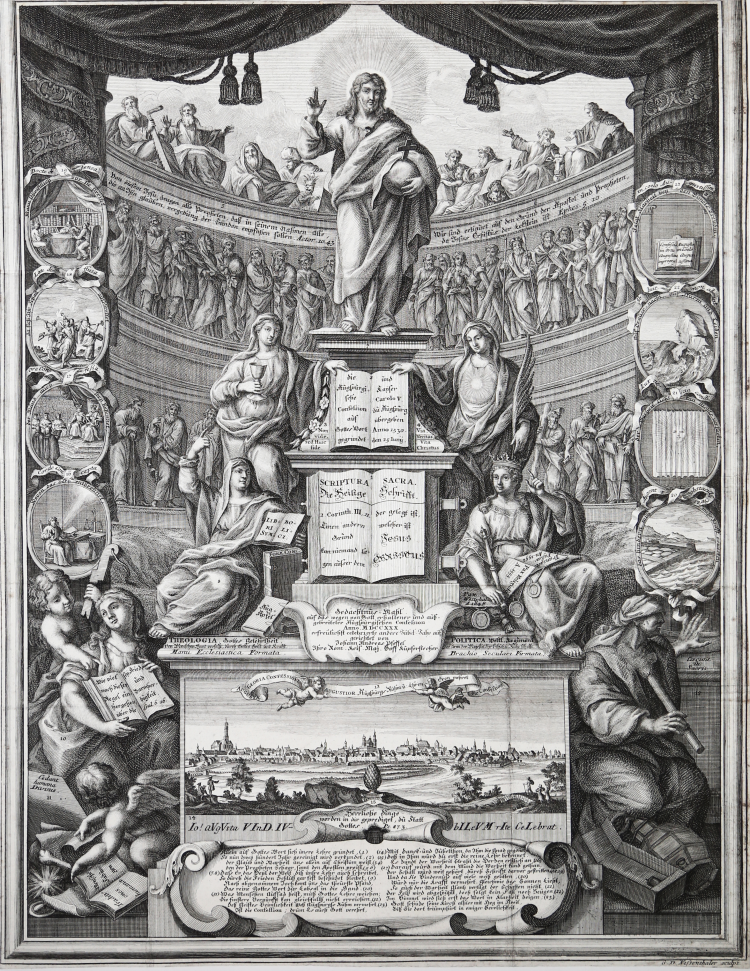



| Reference: | S46758 |
| Author | Georg David Nessenthaler |
| Year: | 1730 |
| Measures: | 500 x 645 mm |


| Reference: | S46758 |
| Author | Georg David Nessenthaler |
| Year: | 1730 |
| Measures: | 500 x 645 mm |
Gedächtnis-Mahl auf das wegen von Gott erhaltener und außgebreiteter Augsburgischen Confession Anno. MDCCXXX erfreulichst celebrierte andere Jubel-Jahr.
Augsburg Confession commemorative sheet with allegory.
Etching signed by Georg David Nessenthaler (1695-1736), printed at Augsburg, Johann Andreas Pfeffel, in 1730.
Signed in the plate: "G. D. Nessenthaler sculps" contains a general view of the city at the bottom (9 x 25 cm).
Allegorical sheet commemorating the 200th anniversary of the Augsburg Confession under Emperor Charles V (1530). Includes a very rich allegorical apparatus, with the figure of Christ in the center.
The Augsburg Confession, also known as the Augustan Confession or the Augustana from its Latin name, Confessio Augustana, is the primary confession of faith of the Lutheran Church and one of the most important documents of the Protestant Reformation. The Augsburg Confession was written in both German and Latin and was presented by a number of German rulers and free-cities at the Diet of Augsburg on 25 June 1530. The Holy Roman Emperor, Charles V, had called on the Princes and Free Territories in Germany to explain their religious convictions in an attempt to restore religious and political unity in the Holy Roman Empire and rally support against the Ottoman invasion in the 16th-century Siege of Vienna. It is the fourth document contained in the Lutheran Book of Concord.
Beautiful proof, printed on contemporary laid paper, with thin margins or trimmed to the platemark, in good condition.
Georg David Nessenthaler(Augsburg 1695 - 1736)
Georg David Nessenthaler(Augsburg 1695 - 1736)